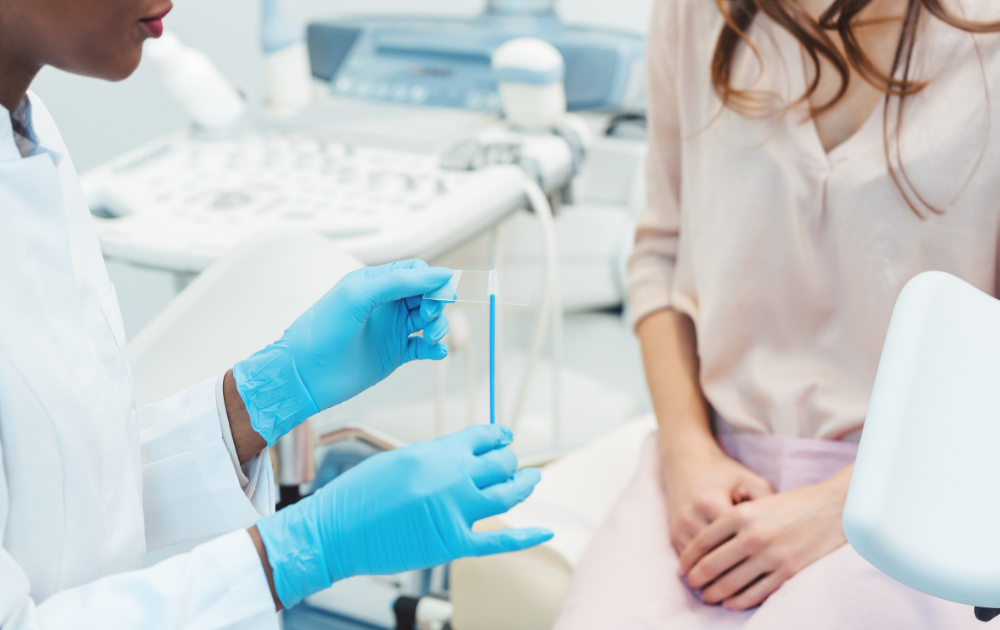
When it comes to what definitively causes uterine fibroids, benign tumors that develop within the uterus, there are numerous myths. Over the years doctors and researchers have been able to prove that many of these rumors are, in fact, just rumors. Uterine fibroids are common amongst women in their late 20s to early 40s and affect close to 70 to 80 percent of women before the age of 50. Despite how common they are, uterine fibroids are vastly under researched.
Additionally, there is little to no information about uterine fibroids shared in school education. In fact, a study conducted by the Society of Interventional Radiology showed that over 28 percent of women surveyed had never heard of fibroids and 57 percent didn’t believe they could at risk. Thankfully, the U.S. is adopting crucial legislation in order to make sure women are given the information they need about uterine fibroids.
Whether you’ve been experiencing period, uterine, or vaginal issues, it’s understandable to wonder if uterine fibroids and sexually transmitted diseases (STDs) could be connected. In the U.S, over one in five people contract a sexually transmitted infection (STI) each year. Therefore, it’s important to understand how STDs and STIs spread and if the development of uterine fibroids could increase your risk.
What Are Sexually Transmitted Infections?
STIs are diseases that are transmitted through sexual contact (oral, vaginal, anal, etc.) and are caused by bacteria, viruses, or parasites. The most common STIs include:
- Human papillomavirus (HPV)
- Herpes
- Chlamydia
- Syphilis
- Hepatitis A, B and C
- Trichomoniasis
- Gonorrhea
- Human immunodeficiency virus (HIV)
Unfortunately despite how common they are, STDs often carry a stigma in the U.S. The stigma or taboo subject, surrounding STDs and other reproductive infections are often caused by misinformation and a lack of education. Each STD can cause individual side effects and symptoms; therefore, it’s important to track early signs of an STD in order to relay accurate information to your doctor.
What Is the Difference Between STDs and STIs?
The medical community, as well as many awareness groups, have begun transitioning from using the term “STD” to “STI” in an effort to clarify that not all sexually transmitted infections turn into a disease.
Many people can contract an STI and not exhibit any symptoms. Some STIs can also clear up on their own. It’s important to understand that not all STIs will turn into a sexually transmitted disease that will need constant medical attention.
Do STIs Cause Fibroids?
The short answer is that both STDs and STIs do not cause uterine fibroids and vice versa. STIs are caused by reproductive infections, bacteria, and parasites. These infections can be passed through bodily fluids such as semen, vaginal, or blood.
Some STIs can lead to different kinds of cancer; therefore, it’s important to practice safe sex and alert your doctor if you notice any abnormal changes. Untreated HPV can develop into cervical cancer and chronic hepatitis B as well as C can lead to liver cancer. Left untreated, chlamydia and gonorrhea can both lead to pelvic inflammatory disease (PID) which is a type of reproductive, uterine infection.
What Actually Causes Fibroids?
In comparison, uterine fibroids are caused by an increase in hormones. An influx of estrogen and progesterone can lead to rapid fibroid growth. Researchers have found that fibroid tumors contain more estrogen and progesterone receptors than typical uterine muscle cells.
Even though it is rare, uterine fibroids can become infected; however, it is not an STI. A uterine fibroid infection can sometimes be caused after fibroid treatment when the dead fibroid tissues slough off the uterine walls. However, these uterine fibroid infections can be treated with medication and are rarely serious.
Lastly, uterine fibroids rarely lead to cancer like STIs can. Less than 1 in 1,000 fibroids are found to be cancerous. Women in their middle to late 40s and older are at a slight increase of cancerous fibroids compared to younger women.
Try our easy fibroid symptom checker to see if you could be at risk for uterine fibroids.
Can Fibroids Be Sexually Transmitted?
Take a deep breath. Rest assured knowing that fibroids cannot be sexually transmitted as they are benign growths made of smooth muscle cells and fibrous connective tissue that develop within the uterus.
They anchor themselves into the uterine wall and cannot be transmitted from person to person.
Can Fibroids Cause Discharge?
You may be surprised to learn that fibroids can sometimes increase the amount of vaginal discharge you have. However, fibroid discharge is typically watery and white or light pink if there’s some excess bleeding. In comparison, when it comes to STIs one of the main symptoms can be abnormal discharge. This is true for gonorrhea, chlamydia, and trichomoniasis.
Remember to track the amount, color, smell, and texture of discharge in order to accurately inform your doctor. STI discharge differs from regular or fibroid discharge because it typically has a strong odor that is accompanied with irritation or itchiness. Fibroid discharge should not have an odor or cause irritation.
Treatment for Uterine Fibroids
Both STIs and uterine fibroids are considered taboo subjects when they should be everyday conversations. Understanding your period and reproductive health is key to your overall well being. Learning how STIs are spread, what to look for, and how uterine tumors like fibroids are different is important to living a healthy life. Thankfully, treatment for uterine fibroids is easy and convenient, especially with nonsurgical solutions like uterine fibroid embolization (UFE).
At the Fibroid Fighters Foundation, we help educate people about fibroids, learn about their options, and get a clear diagnosis. We’re here to help answer any questions you may have about your period or other women’s health issues. Give us a call at 855.455.5262 or contact us conveniently online.







